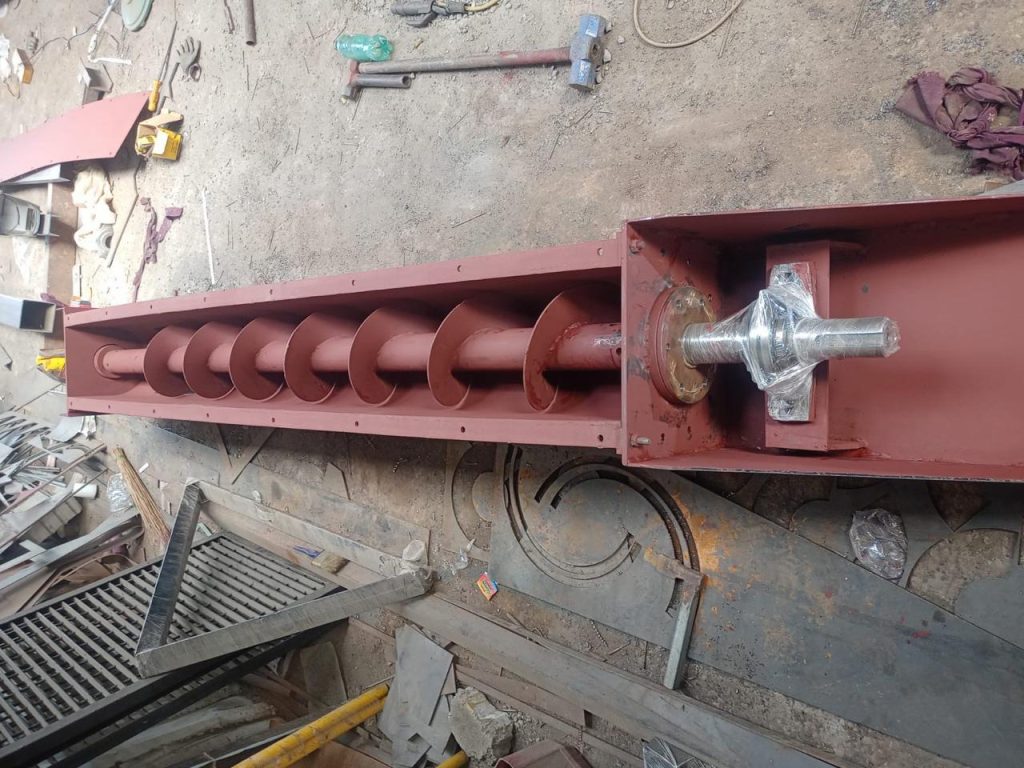
Screw Conveyor
A screw conveyor is a type of mechanical conveying system that uses a rotating helical screw blade to move materials. Here are some key features and specifications:
Components
- Screw: Helical screw blade that rotates to move materials.
- Trough: U-shaped or tubular housing that contains the screw.
- Bearings: Support the screw at either end.
- Drive: Electric motor or gearbox that powers the screw.
- End seals: Prevent material from spilling out at either end.
Specifications
- Screw diameter: 100 mm to 1000 mm (4 in to 39 in).
- Screw length: Up to 30 meters (100 ft).
- Speed: 10 rpm to 200 rpm.
- Capacity: Up to 1000 tons per hour.
- Power: Up to 500 kW (680 HP).
Types
- Horizontal screw conveyor: Used for conveying materials horizontally.
- Inclined screw conveyor: Used for conveying materials up or down inclines.
- Vertical screw conveyor: Used for conveying materials vertically.
Applications
- Food processing: Conveying grains, powders, and other food products.
- Chemical processing: Conveying powders, granules, and other chemical products.
- Mining: Conveying minerals, ores, and other mining products.
- Wastewater treatment: Conveying sludge, biosolids, and other wastewater products.
Advantages
- Low maintenance: Simple design with few moving parts.
- High efficiency: Can convey materials at high speeds and capacities.
- Flexibility: Can be used in a variety of applications and industries.
- Cost-effective: Relatively low cost compared to other conveying systems.
- Screw Conveyor usually consist of a trough or tube containing either a spiral blade coiled around a shaft, driven at one end and free at the other.
